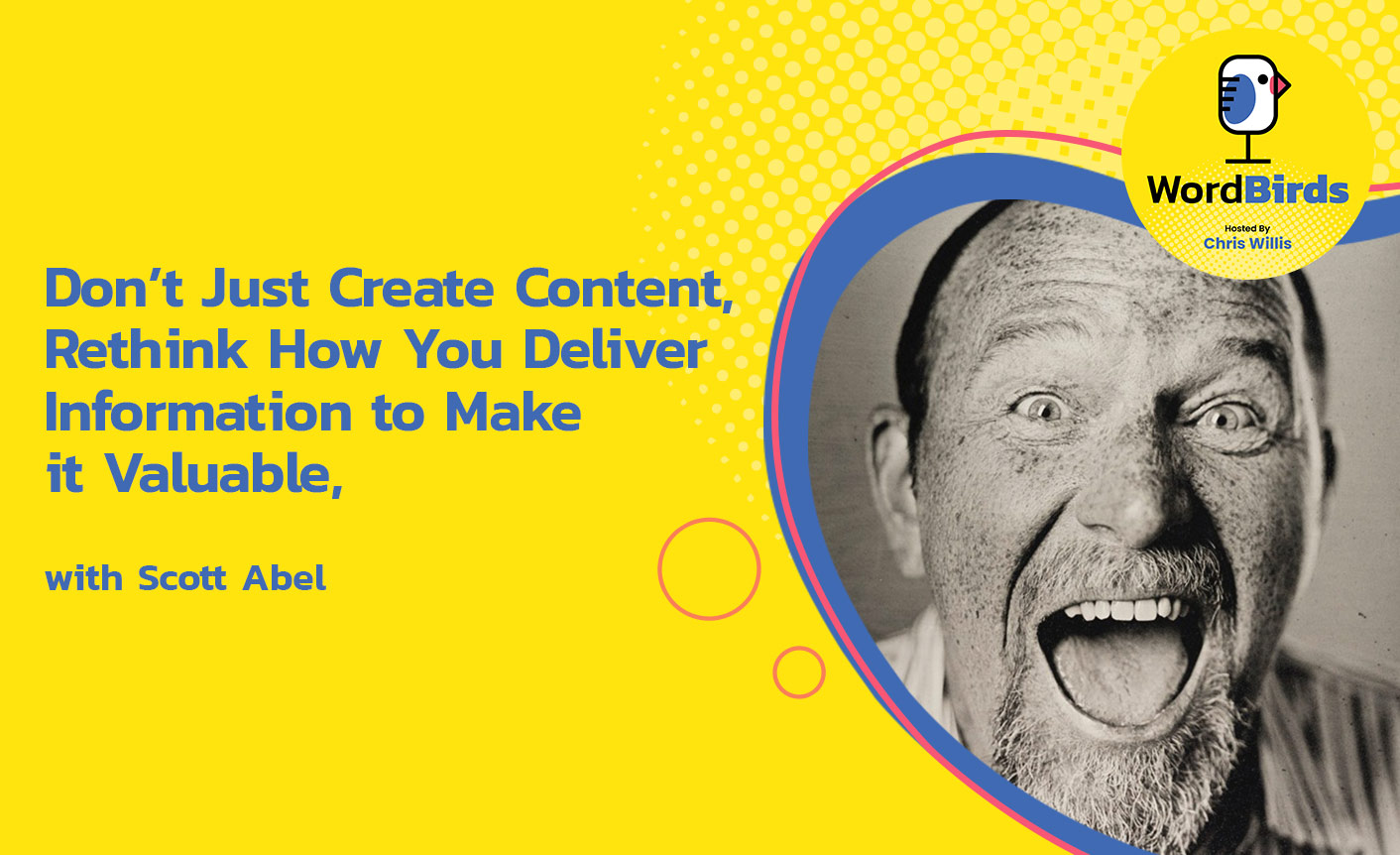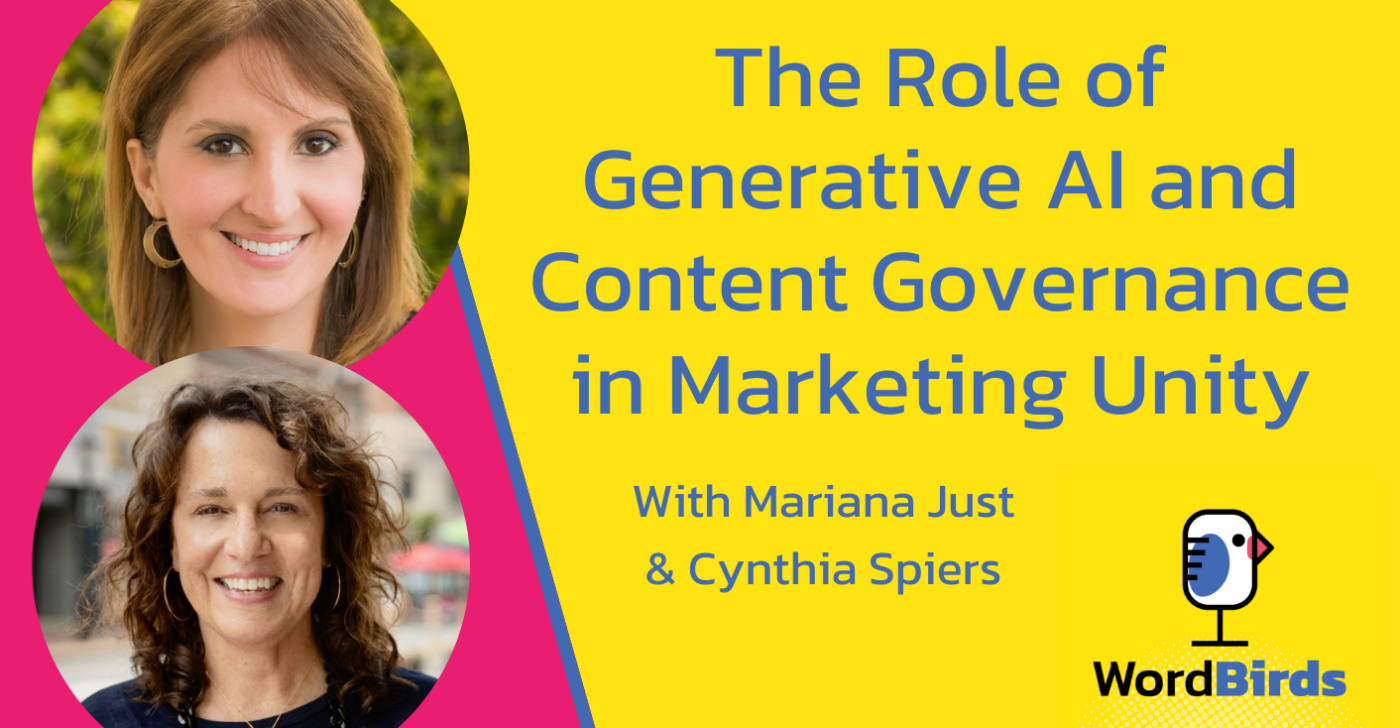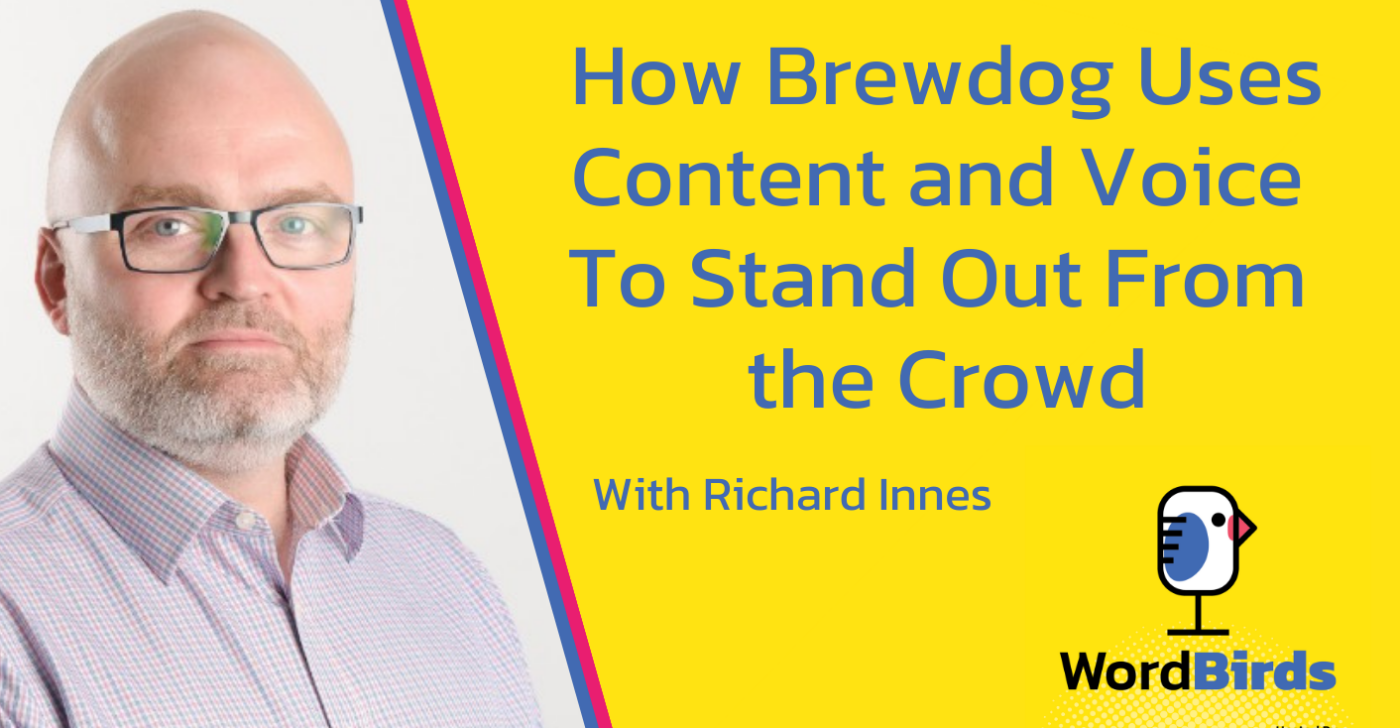Your content is the most valuable thing you can offer to your customers, so you need to make it as accessible as you can. Stop dividing your content into different silos. And have just one source for all your content. Also, don’t be afraid to innovate and try something new. No one says that it’s the law to only use PDFs. Rethink the way you deliver your information.
Join Chris Willis as he talks with Content “The Content Wrangler,” Scott Abel about how you can deliver your content in the best way possible. Tune into this epsiode and say goodbye to confusing content experiences for your customers!
Watch the episode here
Listen to the podcast here
Read full episode transcript
In this episode, we have the Content Wrangler, Scott Abel, here with us. We’re going to be talking about the benefits of placing all of your product content in one place. Not just physically in one place but spiritually across the organization in one place and reimagining the way that we deliver information across the entire customer journey.
We’re coving a lot in this episode. Let’s sit back and get some insight from the flock. Scott, welcome to the show. I’m excited to have you here.
Thanks for having me. I appreciate it.
It’s fun to talk to you because there’s a certain celebrity element to the Content Wrangler. For the readers, Scott and I have only talked once on a call. A lot of what you’re getting is a conversation long built up to where we are now. This will be fun and interesting. One of the things you’re talking about now that’s an interesting topic to lean into is the idea of where content lives.
I have a vision that within our organization, we have one copy of everything. It all lives centrally. Anywhere that it’s used, anytime, anywhere in the world, I can measure its usefulness and the ROI for that piece of content.
Let’s even go smaller than that and talk about product content. Having content in one place seems like an interesting idea that nobody seems to understand or execute. Where do you see the importance of bringing all your product content together in one place? Why’s that a thing?
For me, it’s a thing because for the customer, the end-user human being who’s looking for information on something about a product, I’m certain the amount of effort that’s required to retrieve that information and successfully use it is important to people. They don’t like to waste their time, so why make all of these roadblocks preventing them from getting to the content? That’s one reason.
Internally, there are also some business reasons to try to aggregate and collate a lot of content. Maybe there are certain types of content you wouldn’t include in the everything basket because everything might include things that, for whatever reason, internally you may decide isn’t a good idea.
People don't like to waste their time, so why make so many roadblocks preventing them from getting to your content? Click To TweetIf you did it internally, the benefits would be a single source of content for everyone in the company to go to as well. The support team could see the same kinds of content that everybody else could see. Now, in these silos, each department inadvertently creates hurdles to getting to the information. When we attempt to solve it, we do it in a mediocre way. Maybe internally we say, “We have a local area network. We will create an intranet website and dump it all in there, then we’ll just put a search engine on top of it.”
That doesn’t improve the experience. It just gives people a bigger Google without the smarts to search, then they’re frustrated. Productivity and savings inside, control, and governance might be other internal reasons to have everything in one place, then externally, convenience and making customers’ lives easier is the main benefit of bringing all product knowledge into one portal.
From what I see, the primary benefit for me is understanding what gets used. We create so much content on a daily, weekly, and monthly basis, for whom? To your point, you throw it out there in a repository somewhere and make it searchable. I have no idea whether it’s providing any value to anybody.
From the creation standpoint, am I creating what people need? From the maintenance standpoint, what am I uplifting when images change, when messaging changes, and when the company brand changes? What’s being used? There are 25 copies of it. How do I even start?
It seems like if you were going to try to tackle that problem, you have to rethink how the organization you work for is creating, managing, and delivering content. It’s not enough to put it all in one place. You probably will have to make changes in the way that you create the content so that the content assets appear to be from the same brand, speaking from the same voice, and using the same words, which is why we care about words, in general, is because of their communication power.
If we’re not able to harness them and put them to work for us, then we’re willy-nilly throwing it out there. That’s what I mean by it being a mediocre experience. It’s not thought through. Now, if you were to wait in line at a store and ask for help with a refund, let’s say you’re at a grocery store or convenience store or something.
The person there treated you the way that the software, the system that you’re trying to seek answers from, treated you. You’d be frustrated and walk out because they’ve giving you useless information. They’re like, “No, I don’t know anything about that but you did say bananas, and there’s banana-flavored pudding over there.” It’s like, “That’s not useful.”
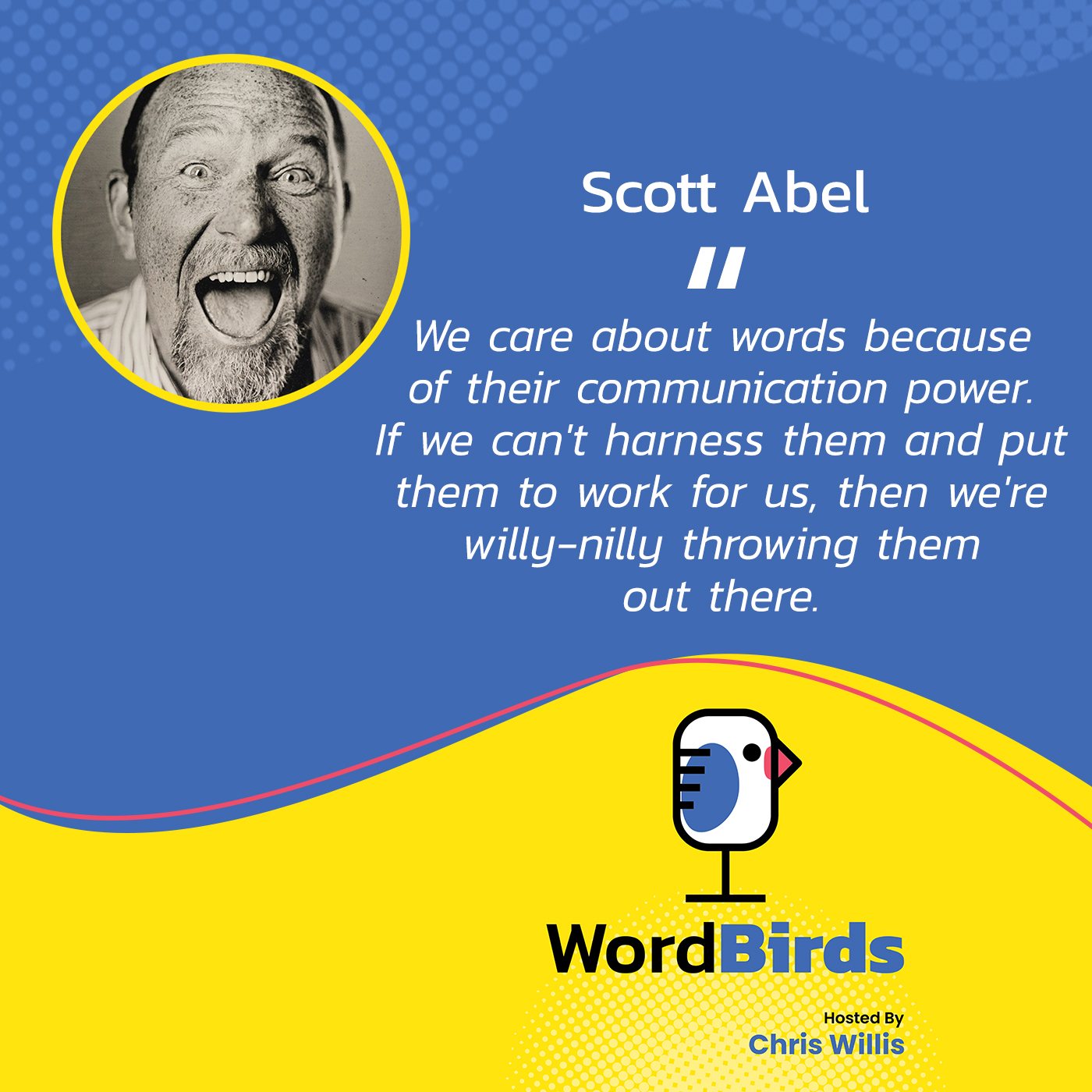
It’s great, but that’s not what I want.
It’s not what I wanted. You would know that, but you’d also have the benefit of nonverbal communication cues from me, perhaps. You would have prior experience with people coming in the door and asking for bananas. You would use that to craft your response.
I don’t think we don’t think through the customer’s journey enough with our content to understand why they might be frustrated. We’re not always going to be able to provide them with a perfect experience where there’s always somebody who’s going to come up with a question that’s too hard for us to have even thought about preparing an answer for.
I think those cases are probably few and far between. Most people probably go to a site and search for it. If they don’t get immediate gratification, whatever that might mean for them, then they leave. They leave with a, “that wasn’t very exciting,” feeling. You don’t want that as a brand. We don’t want them to be cheerleaders for us 24/7, but we want them to leave having a positive experience.
If I went to the store and the guy said, “No, I don’t have those, but I’ve noticed you come in for bananas in the morning. I don’t think I’ve been ordering enough. Maybe I’ll try ordering half a dozen more, so the next time you come in, maybe there will be some bananas.” It seems like they have customized that message for me. Consumers are starting to expect online information retrieval services to behave in the same way, at least as close as we can get.
That’s a lofty goal. It’s not just a creation. It’s systematizing the whole process so that you’re collecting data as data is being requested so that you can create more data to meet those requests. How to even start doing that?
Most companies probably find themselves in a situation where they have a lot of legacy content because they’ve been open for business for X years. It might be different from a startup. If you and I started a company now, we could start with the idea that our centralized repository was going to be a single source of truth, and we would basically look into it like you would a house. A house might be a container for lots of things.
There are also people and rooms in the house. Each room is for a different purpose. If you peer in the window of the bathroom, you can’t see the kitchen usually. You’re only seeing into the part that you need to. We need to build a window into our content that people can peer through. In order to do that, we have to segment our content. We have to break it down into small pieces.
We have to make it machine processable or machine understandable or readable so that when a human asks the machine a question about the content, the machine can go and learn something from the previous experiences and apply that to the new thing or follow a simple rule. If somebody wants bananas, give them content about bananas. Don’t give them content about banana pudding. They didn’t even ask for banana pudding. It’s a big exercise.
For a company like my size, that seems like something that’s hard, challenging, and will take a while but is achievable. For the size of the companies that we generally talk to, that’s a big thing, like millions of pages of content. The first thing is, “What is the million pages? What do we have here? How do we metatag all of this, make it usable, findable, and then up to date?”
Even before that, we have to think about, “Should we be even using the word page?” Who said somebody was looking for a page? They woke up and said, “Let me find the page.” They’re like, “I want the price of that vacation condominium I saw in that Airbnb listing,” and when I clicked the button, it said, “Unable to process your request at this time, but you can email the owner of the property.”
You email the owner and you don’t want to know what page you can point me to. You want to know the price. What’s the price? Give me the answer. The more we respect that we’ve hidden all the answers inside of all these documents means that maybe the question isn’t how difficult it is, but it’s: “Should we unwind this less than thoughtful approach to content that we’ve been following along with?”
By the way, everybody on Earth has. It wasn’t like your clients and my clients are somehow different from everybody else. We’re all taught to write in the narrative. We’re taught to start with a blank piece of paper or on a computer, a blank computer screen, then we type away and add our words. The word nerds start to create the content.
Our power and value were our commands of the words. Now, our power and our value need to be augmented. We need to be able to understand the power of words and use them in a way that’s meaningful. We also need to understand how computers interpret those words, what can computers do to help us move those words around, and get them in front of the right people or, in the house analogy, in front of the right window so that when people peer in, they don’t see all the other stuff that they don’t need to see. They only see at least a slice that’s relevant and less likely to be perceived as mediocre.
It’s moving from document creation to modular content. We’re talking about XML or data or some way of breaking up the content, identifying the answers that are being given in the content so that those answers can be found when the question is asked, versus my original example of, “It’s on page three of the product brochure.”
We also have to start thinking about “why are we referencing these things?” inside of documents. When you start referencing a page or a previous paragraph or you say in the paragraph below, you’re making a huge assumption that the paragraph is always below, to the right, over here, or at that hypertext link that you added to it.
If you don’t have something that says figure one changed, then when somebody goes to read figure one and you’ve changed figure one someplace else, you’ve broken that relationship. Broken links and poorly thought-out uses of words to point people toward content are also littered inside all the documents we’ve created.
You can’t just break them up into little pieces without reading them and repurposing and rewriting them for the purposes that you have now without the danger of potentially breaking your continent into little pieces then moving it around and not making it any better at all. There’s a danger to it. It’s risky. Big companies that have adopted this approach should be said that truthfully, they have no one that I know. Any company has adopted it across the board in every department.
It sometimes becomes a turf thing. One part of the company may be more prone to adopt advanced information management and delivery capabilities than another. That introduces a new problem. If you have a consumer who’s exposed to that experience and also another experience produced by the same company but different departments, they begin to wonder, “Do you people even work together? Do you talk to each other? Do you know that I’m the same person and you sent me to three different websites that are all designed by different well-intentioned people who have the best in mind for the customer?”
If you have more control of your words, you'll have fewer issues with pricing on translation because you'll know why it ebbs and flows. Click To TweetBecause they never recognize that the customer’s relationship with the brand encompasses all kinds of channels in different places, they focus on improving their experience, not the overall experience. I think that’s one of the things that leaders do seem to care about. They want their customers to have a perception that it was a good experience. No leader I’ve ever talked to has said, “Please, build me some stuff that has a crappy experience.” That’s not a thing.
I use that example with our prospects. I talk about how some people might want to create content that is completely unreadable because they’re trying to trick you into something. We don’t have any customers that are trying to do that. It’s the example of this not working is when you have, for instance, your product manual team completely disconnected from your support team or your support portal team. In the manual, you’re describing a process. When I have a problem with it, the support people are describing it in a completely different way.
I have a customer that makes motorcycles. On page three of their manual, they describe how to connect the battery. It best be the same description on page 367 on the website in support tickets and on the phone because if it’s not, then I’m more confused at the end of my journey than I was when I started because you’ve sent me in ten different directions.
It’s common in our industry sector for leaders of companies that believe they can manage information better. They’re going to make some changes to become more capable of delivering better content experiences that they start to recognize while they go through the process of looking at their content, they start to realize that it’s not the problem that they think it is.
They think it’s a problem with the website. For example, “our website sucks.” You go back and find out that there are 50,000 people contributing to the website, and there’s no governance and standardized way of doing it. This has happened to me, where you read one document, and it says one thing. You read another document, and it says something else. Now, if it’s an important thing, you may say to yourself, “If I follow the instructions on example number one and I’m wrong, it’s going to delay my loan or cancel my agreement or whatever.”
It’s something important. It could be an insurance claim, for example, or a medical procedure. You have to call support. One of the business reasons that investing in the complexity of trying to solve this problem is that the most expensive complaint that comes from leaders is, “why are we spending so much money on X?” X can be customer support or translation, both of which the cost is impacted by what happens upstream.
If you have better words and more control of your words, you have fewer issues with pricing on translation because you’ll better understand why the price ebbs and flows. The same can be true of support. If you have better support content, the argument goes, “You’ll have fewer support tickets and fewer support calls.” I call crap on that. I say, “That might be the case.” In the company that has all the silos, there’s the company silo trying to solve the content customer experience problem with customer support, and then there’s the marketing team and a new product development team that’s inventing three new products your customers never heard of before.
If you make better content for your existing customers and with existing ones, some of them may come to the website and can self-service in your knowledge center. If you brought all the content together in one place, they might be able to stand a chance of finding what they need without your involvement. If they start to lack confidence in what you’ve provided them, then if the risk is high enough, they’re going to call support. If you’ve got people that are confused, they’re going to call support. By the way, even if you’ve cleared up all the confusion, you can’t fire your support team because you’re inventing five new products that have no history. The audience knows nothing about it.
Let’s say that we launched five new products and cleaned up five existing products. Our company has ten products. You would think if we cleaned up the five, we’d have fewer support calls, but simultaneously, we’re launching five new products. Support might see a different call. They may see higher call volume but not related to your crappy content. That might be related that it’s a new thing, and people are not sure what these vocabulary words you’ve made up mean. They call for those reasons. You’re right. It’s painful for big companies and can be scary, but it’s probably worth the initiative if you’re able to capture metrics from those other parts of the company where the confusion may lie.
I would imagine Michael Iantosca from Avalara. He was on the show in a past episode and talked about what they’re doing at Avalara. He’s starting from the ground up to solve this problem for them. They have this huge abundance of information they need to deal with. He’s been brought out of retirement to solve this very problem.
There are companies that are ripping into this. They’re now still a minority. It’s still trying to get across the message like, “We’ve been selling with this digital shift messaging for a decade,” but it happened on March 11th of 2020, and all of a sudden, we’re there.
Your primary touchpoint with your consumer is your content. If your content can’t answer questions, here’s one of several things that are going to happen, and you’ve detailed several of them. 1) I’m going to call support. I don’t want to but I’m going to. 2) I’m going to leave. There are probably other outcomes, but those are the two big ones. 1) I’m going to cost you money, and 2) I’m not going to be your customer anymore.
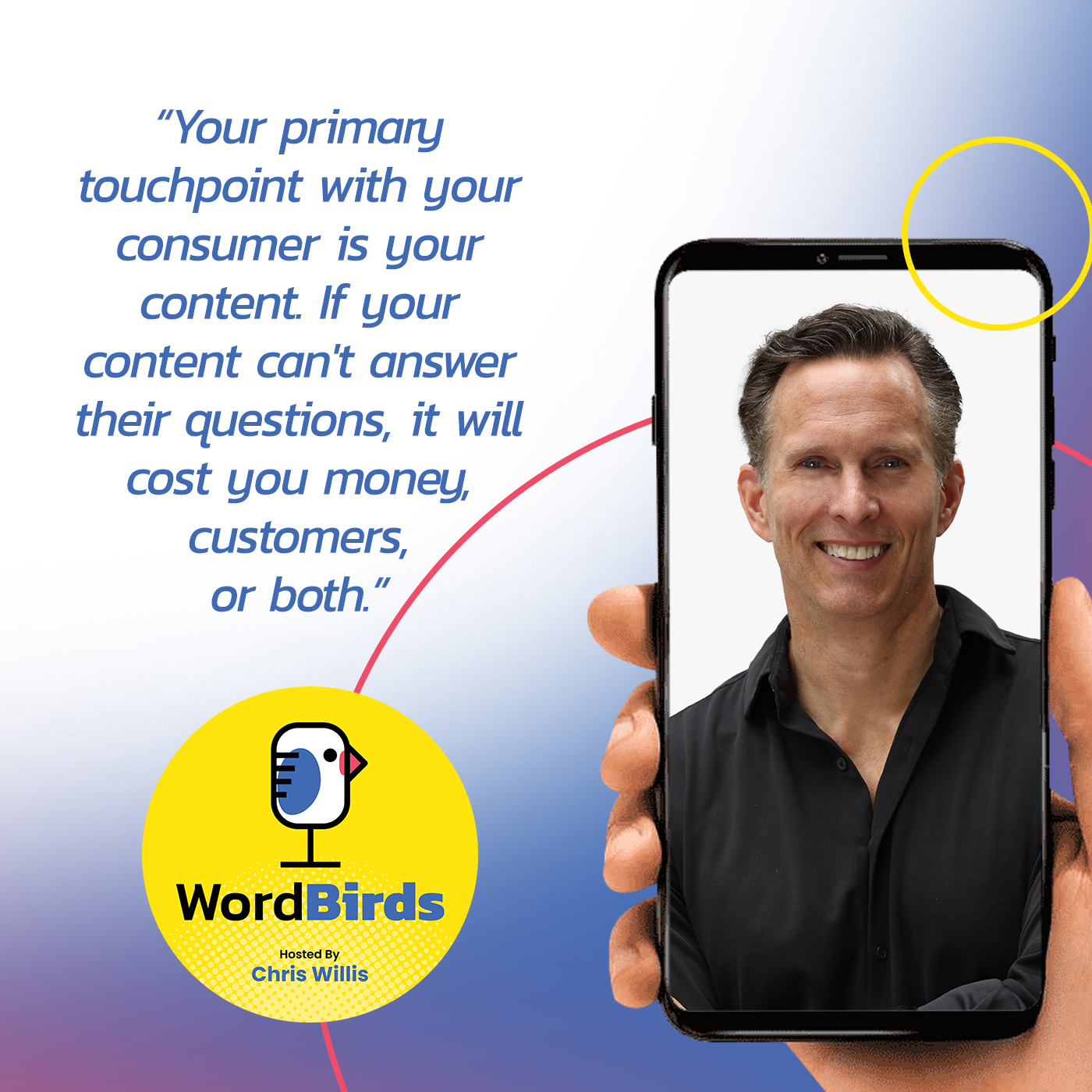
Three, I want to publicly shame you, so I’m going to go to all of the places, including your customer community, which is probably on a different URL. It’s somewhere else far away, but somebody else will stumble into it, and then they’ll hear something that causes them to wonder, “Am I making the right decision? This looks like a great tool for me but I’m reading the experiences of these people who used it, and they couldn’t find any information. I don’t have the information to make this tool work. I need a great source of information. Maybe I shouldn’t buy that product.”
Maybe there’s probably something else.
You could damage the perception just by that. The example you brought up for your readers, Avalara and the readers, that’s a company that provides financial services information to tax-related service businesses. It’s very formal, and the content has to be the right content. It can’t be close. It has to be exactly the right thing when they need it in the right way or all confidence will be gone right in their brand and there will be no way for them to make money.
They’re investing because they understand the power of that content drives every piece of revenue and every piece of business. It keeps customers loyal who could go to competitors of Avalara. Not all companies are equal, so not all companies will be able to afford to do or have the maturity and experience to do everything.
If you take baby steps and start pushing along, you’ll start to see where all these little pieces add up. I’ll give you a great example. There’s a content company that many of your readers could hire that would help them do things like prepare their content for a new content management system or help them prepare for translation or terminology management or something like that.
They have a struggle internally. They need to make a proposal to sell their services. One day, they were complaining about how long it took for them to create their proposals. I said, “It shocks me that you’re not using the same approach that you preached that all your customers should use to manage their content. Have you thought about making all the value propositions that you’re selling to your potential customer individual small items like you would or did a topic or some technical documentation chunks of content?”
If you add a chunk that was called product description one and a chunk called, “Reason you should buy product number one,” then reason numbers two and three, you could then interview your customer on the phone or in person. You could then drag and drop the right answers to the questions and the products that you would give them into one document very quickly.
They did do that. This company and I work together. We broke their content into little pieces like we would documentation, but it’s sales proposal content. Now, they can weave their proposals together in minutes instead of days. As soon as they saw the value of that, they asked the question, “Why are our proposals documents?” I thought to myself, “I don’t know where you’re going here, but this sounds super interesting. Tell me about it.”
They said, “When the consumer lands on the information, do they care if it’s a piece of paper or a PDF or a screen on a website? What if every proposal we gave was a knowledge center?” The proposal was the main content, “Donna, thanks for your call. I learned from you that you have three big problems, so I’ve got three solutions I’d like to recommend, and they’re right here,” but it only has the title of it and a short description.
Rethink the way you deliver information. When the consumer lands on information, they don't care if it's on paper, PDF, or website. Click To TweetThere are some links to, “How does this work? How much would it cost? How long does it take?” and all the questions that were previously in your long proposal. My client had a 50-page proposal. Now they have a one-page website. You click on the link and land there. It has all the references for everything. All the vocabulary words that they use, they’ve defined in a glossary but they don’t define it in line.
They didn’t write this lengthy narrative. They wrote a short and snippy narrative with the ability to find and get to the content that you need. They presented it as a hypertext link document. I thought that was brilliant. It’s a great way to have an a-ha moment readers might have if they start to dig into their content and look at it with a critical eye, “why’re we doing this?” The minute that you mentioned pages, the very first thing my brain said is, “why a page?”
It makes total sense. It’s rethinking the way that you deliver information.
It wasn’t my idea. It was my client’s idea, and I was like, “that’s smart. Let’s explore that,” and we did. I thought, “we need to do this more.” When could we give somebody a better experience if you think that your PDF delivery of content is not the best experience? We give everybody PDFs all day long instead of hypertext-linked content, and you find out that your people prefer the website. They don’t want to download PDFs. Why create PDFs anymore? It’s because we’ve been doing it for a long time. Maybe the same reason we create pages.
It’s funny. My company is headquartered in Germany, and we’re here in the US. When receipts come in from Square, for instance, it’s an email and I put them in my expense system. Germany’s immediate response, the team in Germany and finance, is like, “I need a PDF.” Why? This is a page built on a website, and in your PDF is a photo of the same thing, so I can get this email and attach it or I can send you the email. Getting that message across is a learned behavior. “I’m looking for the PDF. Could you give me the PDF?”
You’re right about that. It is usually a learned behavior. There might be the occasional exception to the rule, which would be maybe in a regulated environment where there’s some outdated regulation that requires a PDF or something like that. In those situations, that’s different than, “I’m used to it this way. Can’t you just do it the way we’ve always done it?” We’ve got people working in these companies, and people sometimes don’t like to hear this word when I say it, but we have to figure out how to manipulate the behavior of the people that we want to do whatever we want them to do in a good way.
We’re not evil scientists trying to trick people, but sometimes, you’ll have to encourage some people in order to participate. Others will see the value immediately because we’re all so different. If we have a one-size fit all model, then we’re missing the opportunity to communicate effectively with other people. The value for investing in the complexity of advanced information management, XML, publishing to multiple channels, and omnichannel is looking at your customer and seeing, “How can I make the most bang for the buck with the least amount of ways and bring the experience to a positive instead of frustrating or a mediocre one?”
The thing worth noting for the people reading is when we talk about XML and structured content, it sounds like we’re talking about technical content. That ideal is moving further into the rest of the organization. Marketing is using structured content. This idea of snackable bite-size pieces of content that can be dropped into any use case lives across the business. This isn’t limited to one particular audience inside the organization. This is where we’re headed.
Savvy organizations tend to bring people together from different departments who have open minds and the willingness to learn something new. They sometimes don’t go in the direction you think they might. They solve these problems in unique and creative ways using the technologies that they have available now, and that’s innovation.
We want somebody to disrupt the status quo. From now on, we do no PDFs at this company. If you’ve got a plan and can make it work, you might end up with no PDFs, like people say, “I’m six or seven now. Local little businesses around me refuse to take cash any longer.” I live in a place that’s technically viewed as a retirement community, so lots of people of that certain age are not necessarily fans, all of them, of that, and they think it’s a stupid idea because they’re accustomed to money.
My dad goes to the bank every week.
Younger people are like, “who cares? My phone, my wallet, my watch, my ring, I’ll pay whatever way you want,” but guess what? It’s all in a central repository, and there are different windows that you can look into to see how much money you have and to pull that money out. That’s all we’re asking companies to do. That product content in one place argument is super powerful.
There are many reasons to want to think it through, especially if you thought about it this way. You probably have support content that you provide to help people use or repair, clean, maintain or do something with your products and services. You probably also have sales content and marketing content designed to convert people to buy it. You probably also have training content designed to teach people how to do more advanced things with it or to set up a complex system.
You may even have reviews from your customers that are published someplace. You might have social media. Maybe an online community where your customers are talking about your products and trying to help each other do better with the software that you’ve developed. If you put all that information in one place, that person can see what you, the company, say. They can see what other people say, the reviews. They can read comments from people in the community, and they can start to have a better understanding of the picture of the ecosystem of your company and whether or not, there are one or two complainers in the social media group.
There’s a bloodbath in there.
As long as companies are trying to solve problems with software and are not thinking about, “how can we integrate them together when appropriate to provide value?” they’re missing an opportunity that many other businesses, especially manufacturing, have already discovered. Manufacturers have an intimate relationship with the companies that make the components that they use to assemble their products. They established these standards where they communicate in a very specific way, “If you’re going to do business with my car manufacturing company, you’re going to give me content in this way.”
It’s nice that you’re used to doing it in a PDF, but that’s not how we do it. If you want the relationship, you will do what they ask. When they do that, the information flows more freely. There could be better ways to do it, but for now, our disconnected way can’t support the multichannel omnichannel world we live in. That’s the real problem. We can’t add more humans to the job roster. Even if we did, we’re adding more complexity that will be difficult to manage.
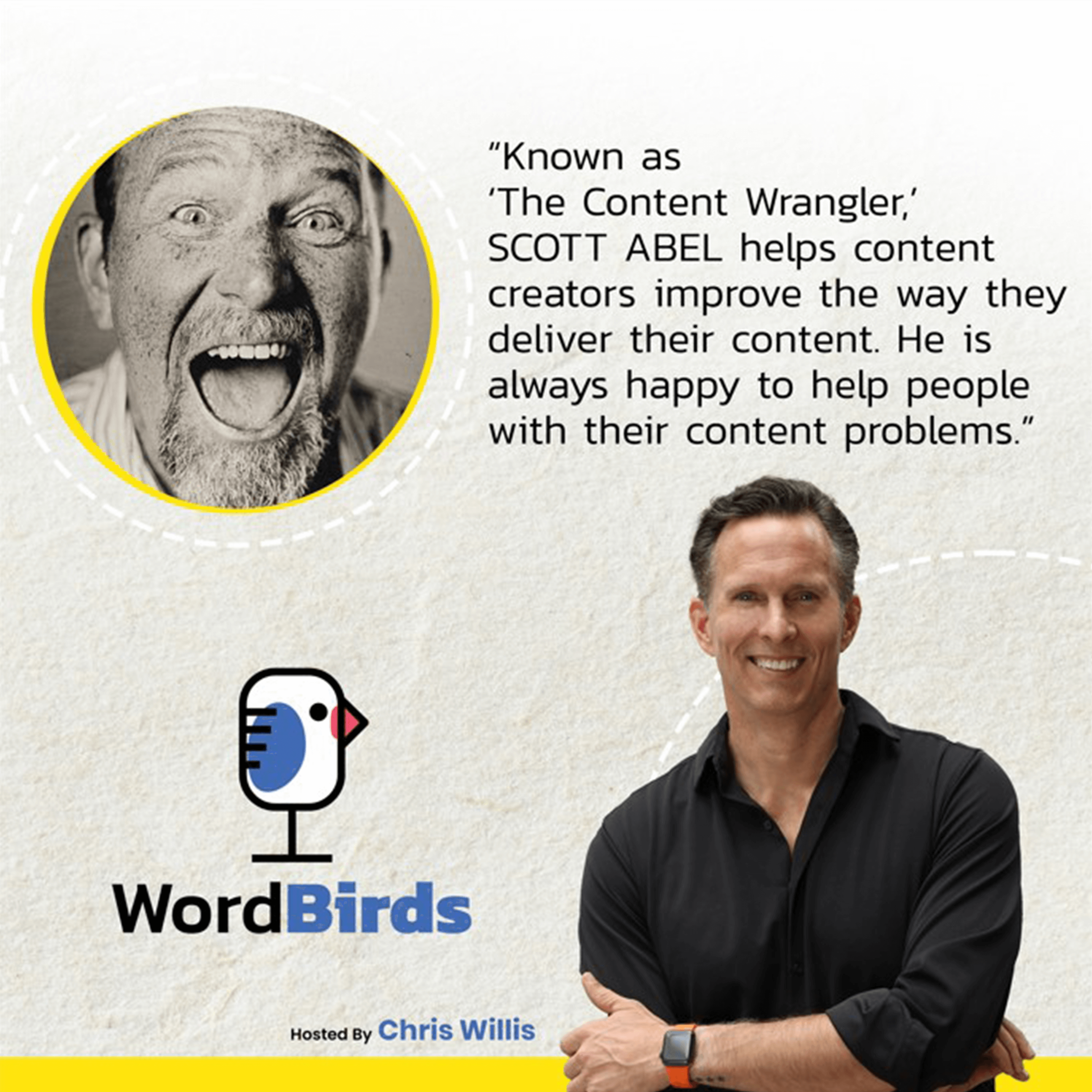
People have different voices and different thoughts. I’m sitting at my desk, reading this episode. I need to do something. How do I get in touch with the Content Wrangler to help me solve some of these problems?
You can jump onto TheContentWrangler.com website. There is a button called Schedule A Call. There are two options, and one of them is to tell me about your content problem. I allocate a couple of half-hour sessions a week to doing that. There’s no charge. I listen to people and say, “I’m not familiar with that or I am. Here’s a book. Here are three people you might want to call. Here’s a website that pretty much has all the answers that you’re looking for.” I’m happy to do that for people and help them. I’ll even refer them to content experts that have way more industry-specific or vertical niche-specific talent. We can do that, and I’m happy to do that.
Scott, thanks for being on the show. This was incredibly informative. People are going to be all over you trying to get help to try and make this happen in their businesses.
I’m the content hairball detangler, so if you’ve got a content hairball that needs to be detangled, you can contact me. I’ll try to help you with that. Otherwise, I wouldn’t say thanks for inviting me to be on the show. It was super fun.
Thanks for being here. Have a great rest of your day.
Important Links
- Scott Abel
- Avalara
- Schedule A Call
- WordBirds – LinkedIn
- WordBirds – Home page
About Scott Abel

Known as “The Content Wrangler,” Scott Abel is a content strategist who helps companies improve the way they author, maintain, and deliver information to those who need it.
